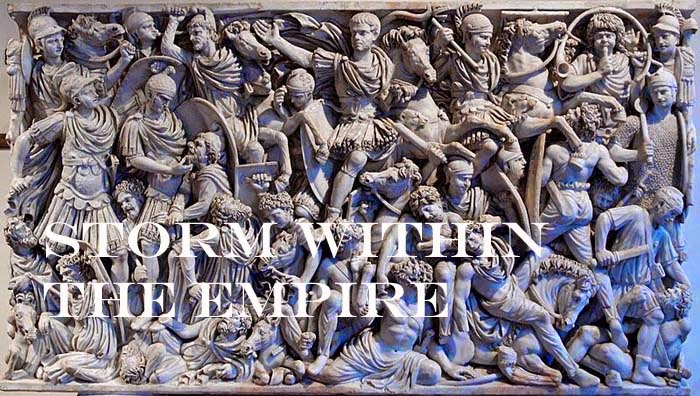Collecting the Meroitic Kushite or their successors,
the Nobades, is driven by my desire to take less used figures from my
collection and recycle them into a usable army. In this particular case, lacking
British troops for the 1885-98 campaign my Sudanese native collection have remained
unemployed since their re-basing four years ago. As the Severan Project grew in
scope several African kingdoms were added to the “to do” list but were given a
low priority. Now that the Bosporan collection is complete I can look toward the
Sudan as my next area of conflict for the Middle and Late Imperial Romans.
Meroitic
Kush
By the 3rd century AD, the Kingdom of Meroe
was on the decline economically and politically and why this happened remains a
mystery to scholars. Archaeological evidence records Meroitic pyramids at this
time were of smaller dimensions, simpler in appearance and held less burial
objects that previous centuries.
Trade routes that moved along the Nile were now making
better use of the region’s eastern shores to move goods to Arabia and India. Aside
from an economic situation on the wane, Kush’s political future was in a state
of flux as the names of Pharaohs or Kings are no longer recorded.
Rome at this time still held garrisons along the Upper
Nile, so we can surmise the threat from the south was significant enough to
maintain a military presence. Further investigation we find a northward
migration of tribes fleeing from the southern regions that would later become
known as Axum. The influx of these tribes into Kush no doubt added to the
instability and as a consequence the inhabitants moved east. Some regard this
relocation of the Kushite during the 4th century a benchmark for the
people better known as the Blemmye.
Artistic license
This past week I have looked at many illustrations,
rock carvings and murals spanning six or seven centuries and looking at the
figures offered currently, I decided to pursue my original course and build a
rebel army. Whether these are to be titled Blemmye or Nobades is not set in
stone, but I do like the idea of a cobbled collection of scruffy looking
rebels, perhaps modeled after the Meroitic list.
Why this list you might ask? - Look to the terrain differences.
The army lists.
I/58 Meroitic
Kushite 592 BC – 350 AD
1 x General (Cv)
1 x Cavalry (Cv) or Meroitic archers (3Bw or 4Bw)
2 x Meroitic archers (3Bw or 4Bw)
5 x Tribal spearmen (Sp)
2 x Tribal swordsmen (4Bd)
1 x Herdsman with bow (Ps)
Terrain type: Steppe, Aggression 1
Terrain
differences.
If you have not noticed, there are terrain differences
between the lists; the successor kingdoms, the Blemmye, Nobades, and Christian
Nubian have “Dry” as home geography, the Meroitic Kush, “Steppe”.
The grassland plains are the Butana steppe which is devoid of
trees for the most part excepting those areas bordering lakes or rivers. Known
for its iron work Meroitic Kush depended on the forests for their production of
their famed iron work.
Map
of Ancient Meroe credit Ancient Sudan Org.:


No comments:
Post a Comment